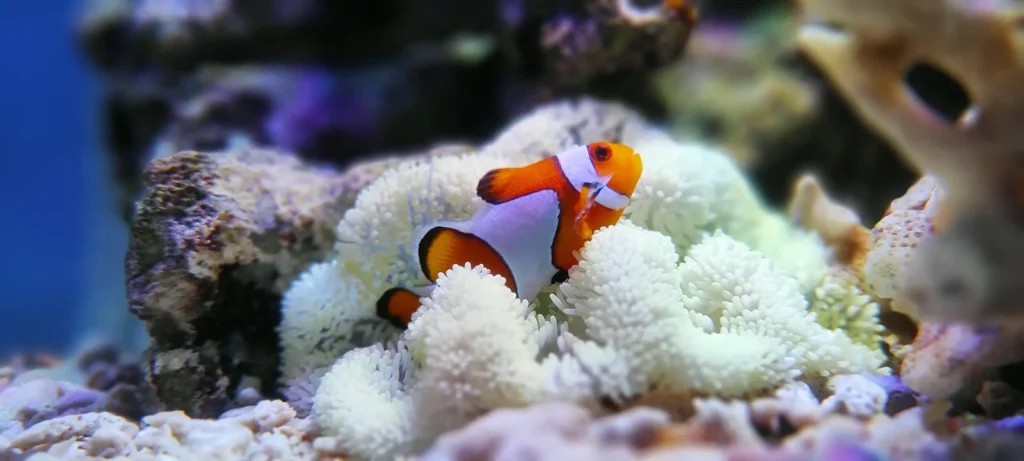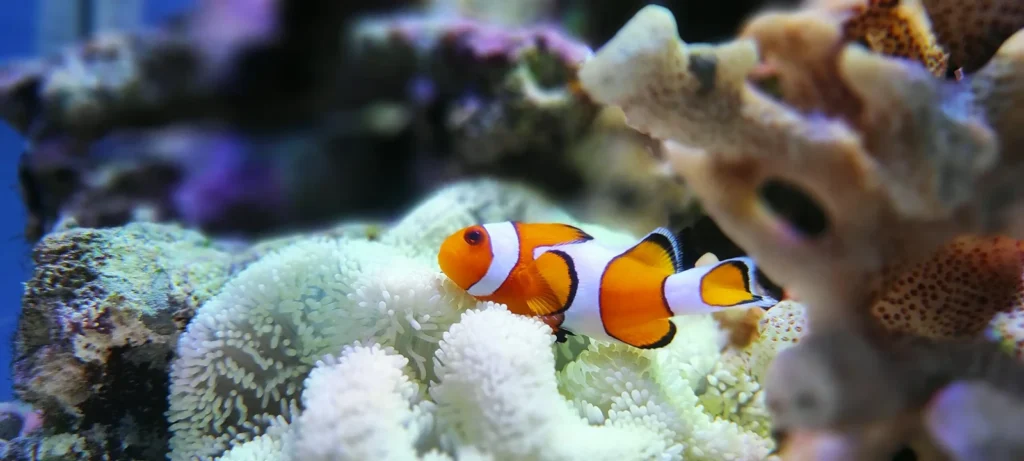Among the variety of marine fish found in coral reefs, Amphiprion ocellaris, or ocellaris the clown, occupies a special place. Thanks to its bright color, interesting behavior and unique symbiosis with sea anemones, this fish has become a symbol of tropical reef ecosystems.
✔ Bright orange color with white stripes
✔ Close symbiosis with sea anemones
✔ A popular aquarium species, known for the cartoon”Finding Nemo"
✔ Able to change the floor if necessary
In this article, we will look at all aspects of the life of this amazing fish.

Scientific classification
✔ The Kingdom: Animals (Animalia)
✔ Type: Chordal (Chordata)
✔ Class: Lucheperi pisces (Actinopterygii)
✔ Row: Perch-like (Perciformes)
✔ Family: Pomacentrovye (Pomacentridae)
✔ Gender: Amphiprion
✔ View: Amphiprion ocellaris (Cuvier, 1830)
📌 Interesting!
Although this fish is better known as the “clown", the scientific name is ocellaris it comes from the Latin “ocellus“, meaning” small eye “or” spot", which alludes to its distinctive white stripes.
Appearance and features
🔹 Body shape:
✔ Oval, slightly flattened on the sides
✔ Relatively short and durable
🔹 Color scheme:
✔ Main color – bright orange
✔ On the body there is three white stripes with black edging
✔ Some individuals have darker or yellowish shades
🔹 Sizes:
✔ Average length: 6-8 cm
✔ Maximum length: up to 11 cm
🔹 Differences from similar species:
✔ Often confused with Amphiprion percula, only A. ocellaris has thinner black edges around the white stripes
📌 Interesting!
Amphiprion ocellaris It has a protective layer of mucus on its skin, which allows it to live among the anemone's stinging tentacles.
Range and habitat
🌍 Where does ocellaris the clown live?
✅ Tropical waters Indian and Western Pacific Ocean
Great Barrier Reef (Australia)
Воды Waters of Indonesia, Philippines, Thailand
🔹 Living environment:
✔ Coral reefs on the at depths of 1-15 meters
✔ Always lives close to sea anemones
✔ Prefers quiet lagoons and protected reefs
📌 Interesting!
In the wild Amphiprion ocellaris it does not survive without the anemone, as it provides it with protection from predators.

Lifestyle and behavior
🔹 Symbiosis with sea anemones:
✔ Lives exclusively among the tentacles of an anemone
✔ Produces special mucus defenses to avoid its venom
✔ Anemone gets protection from predators and food leftovers
🔹 Social structure:
✔ Lives in small groups (usually 2-6 individuals)
✔ The group always has dominant female, male and juveniles
🔹 Defensive behavior:
✔ Hides among the tentacles of an anemone
✔ Shows aggression towards outsiders, especially other clownfish
🔹 Life span:
✔ In the wild: 6-10 years old
✔ In captivity: up to 15 years old
📌 Interesting!
If the dominant female dies, the largest male becomes a female!
Nutrition and role in nature
🥗 What does ocellaris the clown eat?
✅ Small zooplankton
✅ Crustaceans
, Seaweed
🔹 Environmental role:
✔ Reef Cleaner-eats leftovers
✔ Supports anemone health
📌 Interesting!
This fish can feed its anemone by bringing it small invertebrates.
Reproduction and development
🔹 Method of reproduction:
✔ Female lays eggs 100-1000 eggs to the surface of the reef near the anemone
✔ The male guards and cleans the clutch
🔹 Development:
✔ Larvae hatch via 6-10 days
Young people first live in the water column, and then settle among the anemones
📌 Interesting!
If there is no female in the group, the largest male becomes her!
Ocellaris the clown and the man
🔹 Popularity in aquariums:
✅ Very popular species in marine aquariums
✅ Requires minimum of 100 liters of water and filtering
🔹 Industrial value:
✅ Grown in nurseries for sale
✅ Not used in food
📌 Interesting!
Thanks to the cartoon “In search of Nemo, " the demand for these fish has increased dramatically around the world.

Species conservation and environmental threats
🔹 Population status:
✅ The species is not under threat, but the population is declining
🔹 Main threats:
Ruinuvannya coral reef destruction
Zabrudnennya ocean pollution
Wt mass catch for aquariums
🔹 Security measures:
✔ It is grown in nurseries to reduce the catch from nature
📌 Interesting!
Some countries have banned the fishing of wild anemone fish to preserve their natural populations.
Conclusion
🐠 Amphiprion ocellaris is not only one of the most beautiful coral reef fish, but also an amazing example of symbiosis in nature.
💡 Would you like to have such a fish in your aquarium? 🌊✨